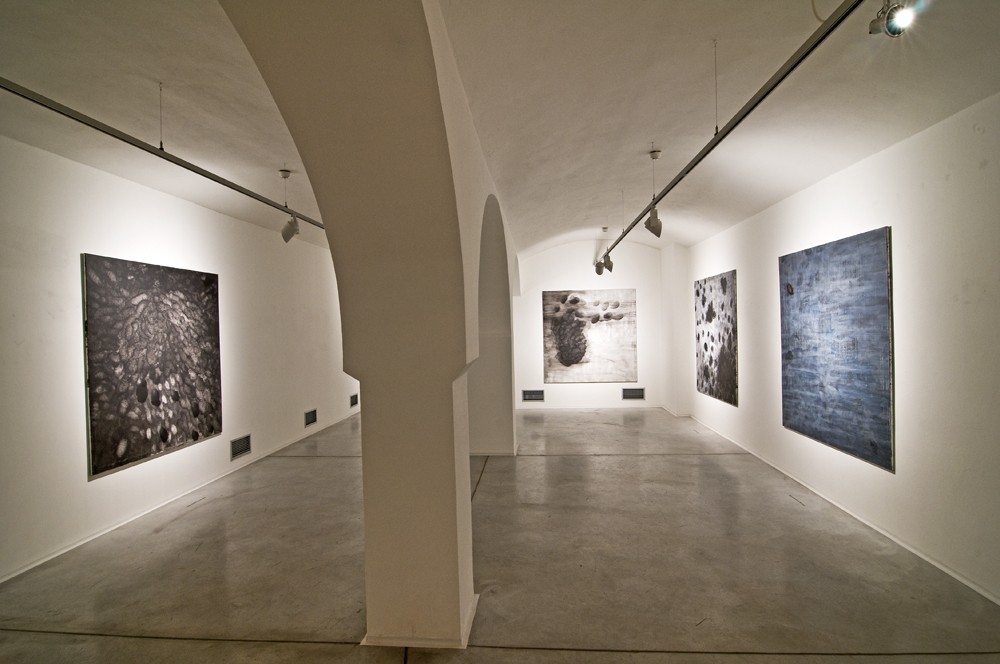Decay Engenders Life
2007
“No seed is of use if it remains whole, if it does not turn black and rot; for procreation is always preceded by decay”
— Fra Marc Antonio Frasselano
Decay giving birth to new life is an expression of one of alchemy’s fundamental postulates of transformation. It is no coincidence that Tomáš Polcar began to work on a series with an alchemist title in his studio in the former workshop of the “Lešetín blacksmith” in the town of Slavětín, where he moved from Prague with his family. In this series, Polcar observes natural phenomena like an alchemist for whom they are a tangible expression of the ideal essence of the world. He combines the material with the spiritual, and – in the spirit of Trismegistus’ concept of “what is down is also what is up” – the microcosm with the macrocosm.
I did one series that was a lot about the space in which the people here live and are aware of, about a kind of flowing. There is a lot of horizontal space here, a lot of ether; the Central Mountains form a kind of belt, below them the river, above them the sky. Everything here plays out from west to east; you can spend two hours watching the sunset and it is always changing. Over the course of two hours during the sunset, a Wagnerian opera plays out behind the village, the end of the setting day… it is simply splendid. Or if there is a thunderstorm, then the mountains become a backdrop for an immense Chinese landscape painting, transitions between colorless, subtle bluish-gray spaces; it is all about horizontality and the flowing of everything.
Polcar takes these observations of atmospheric phenomena outside of town – his observations of the transformation of matter and its decay and disappearance as the path towards new life, the landscape and its passage within the eternal cycle – and captures them in abstract landscape paintings. The series is painted on monumental square canvases. On each painting measuring nearly four square meters, monochromatically coordinated in shades of mostly grayish black or sepia with only occasional hints of indigo, a thunderstorm plays out suggestively. In these paintings, Polcar sticks with a west-east orientation with a clear horizontal sensibility for the original landscape. As the storm approaches, the mood on the canvas gradually thickens, darkens, and the clouds swirl until the first drops fall. The tempest reaches a climax. Then the density is slowly diluted, the paintings become lighter, the weather lets up, and all is cleansed and light, ready for new moments.
The paintings seem to flow, subordinated to the eternal cycle of nature. We can almost smell the water and the earthy decay of humus – and the experience of space.
Space, air, landscape – these are the qualities for which Tomáš Polcar left the city, and he has found them. In an environment free of the manipulative pulse of the city, he begins to experience time differently; through nature, he finds the possibility of perceiving not only its linearity but also its cyclical essence. It is within this context that, over time, a new shape begins to appear in his purely painterly compositions resembling enlarged and blurred Chinese ink paintings: the circle. For now, he does not address it any further, but enjoys one of his most sensual and painterly positions.
© Lucie Šiklová


